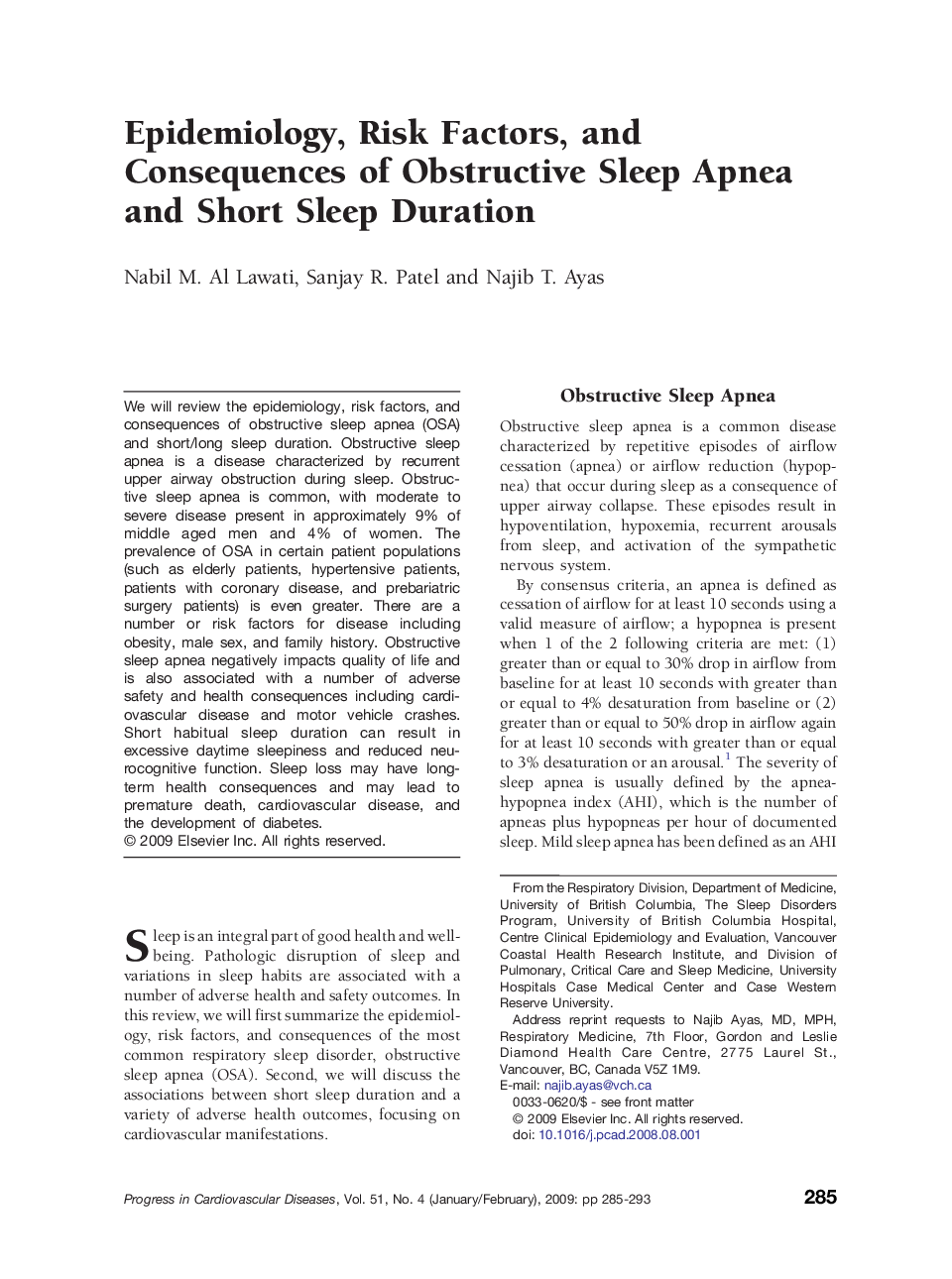| Article ID | Journal | Published Year | Pages | File Type |
|---|---|---|---|---|
| 3006991 | Progress in Cardiovascular Diseases | 2009 | 9 Pages |
We will review the epidemiology, risk factors, and consequences of obstructive sleep apnea (OSA) and short/long sleep duration. Obstructive sleep apnea is a disease characterized by recurrent upper airway obstruction during sleep. Obstructive sleep apnea is common, with moderate to severe disease present in approximately 9% of middle aged men and 4% of women. The prevalence of OSA in certain patient populations (such as elderly patients, hypertensive patients, patients with coronary disease, and prebariatric surgery patients) is even greater. There are a number or risk factors for disease including obesity, male sex, and family history. Obstructive sleep apnea negatively impacts quality of life and is also associated with a number of adverse safety and health consequences including cardiovascular disease and motor vehicle crashes. Short habitual sleep duration can result in excessive daytime sleepiness and reduced neurocognitive function. Sleep loss may have long-term health consequences and may lead to premature death, cardiovascular disease, and the development of diabetes.
